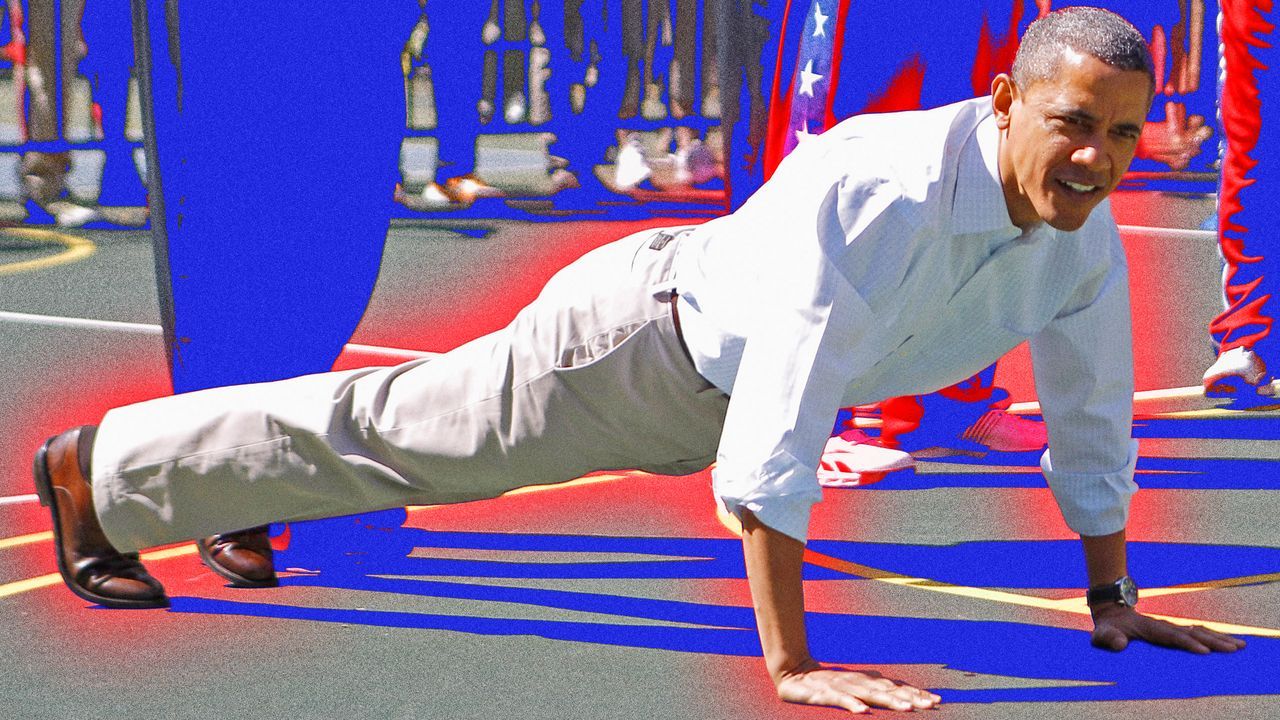If it feels like you’ve been noticing more bodyweight exercises on your social feeds—the kinds of calisthenics exercises your grandparents might have done in gym class—you’re not imagining things. Fitness, like fashion, is cyclical. As sure as skinny jeans will be cool again, you can bet that training styles like calisthenics will always come back around. But this isn’t about nostalgia. Whether we’re talking about bringing back your grandfather’s workout or his gym shorts, it has to hold up in the present day. And in the case of calisthenics, it totally makes sense why this is happening right now.
“I see calisthenics trending upwards, and I think some of that has to do with what’s happened the last five years or so,” says Dogpound founder and celebrity trainer Kirk Myers, referring to the surge of connected fitness and smart home gyms brought on by the pandemic. The pendulum, it seems, is swinging the other way.
“I feel like because technology is such a large part of our lifestyle now, people are trying to get back to basics a little bit,” says Danielle Coleman, director of training at Pvolve. “In this age of access, people are looking for quick and convenient, and I think that’s one of the things that calisthenics training does for people.” Here’s why this timeless technique might be just what your workouts need.
What is calisthenics?
Simply put, they are exercises that utilize your body weight for resistance. Think of the classic stuff like pushups, pullups, squats, and planks, all pillars of a calisthenics program. But while the concept might seem basic at first glance, calisthenics can be scaled up (or down) to meet you wherever you are—literally—and take your fitness to the next level.
Calisthenics exercises for beginners
Here’s a non-comprehensive list of calisthenics exercises that you’ve probably already heard of, and are some of the best calisthenics workouts at home. You can mostly do these from the comfort of your own bedroom. We’ve already mentioned pushups, pullups, squats, and planks, but don’t forget about:
- Lunges
- Crunches
- Dips
- Planks
- Leg raises
- Burpees
- Jumping jacks
You can do calisthenics anytime, anywhere
When it comes to keeping a fitness routine alive, you really can’t overstate the importance of removing the things that get in between you and your workouts—whether that be a commute, a gym membership, or a general unwillingness to leave your living room.
“Those challenges can end up being barriers to exercise. And that’s why I’m a big advocate of calisthenics,” says John Mercer, PhD, professor of kinesiology at University of Nevada Las Vegas. “Being able to incorporate exercise into regular daily life is really important, because it’s sustainable; it allows you to make gains over a long period of time, as opposed to short-term gains that may go away if there are too many barriers.”
Accessibility is one of the top reasons why Myers relies on calisthenics training when creating plans for his jet-setting clientele, which includes perpetually fit A-listers Jacob Elordi, Tom Holland, and Taylor Swift. “Whenever I train people who have to travel a lot, I prefer things that are more minimalist, that they can not only use when they come into the gym but also when they travel, and a lot of that is calisthenics,” he says. “With calisthenics, it’s like, if you’re traveling and you’re in a hotel, you can do it. If you’re at home, you can do it. If you’re outside in a park, you can do it. You can kind of do it everywhere.”

